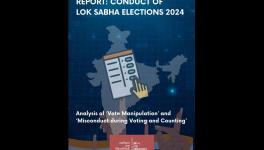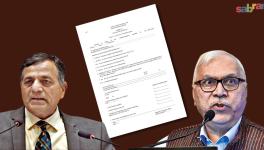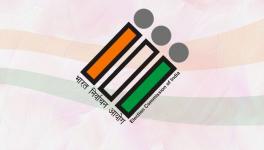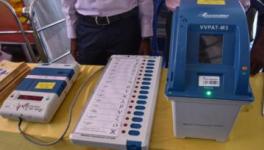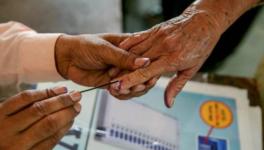ECI’s Stance on Data Discrepancies: No Right to Question?
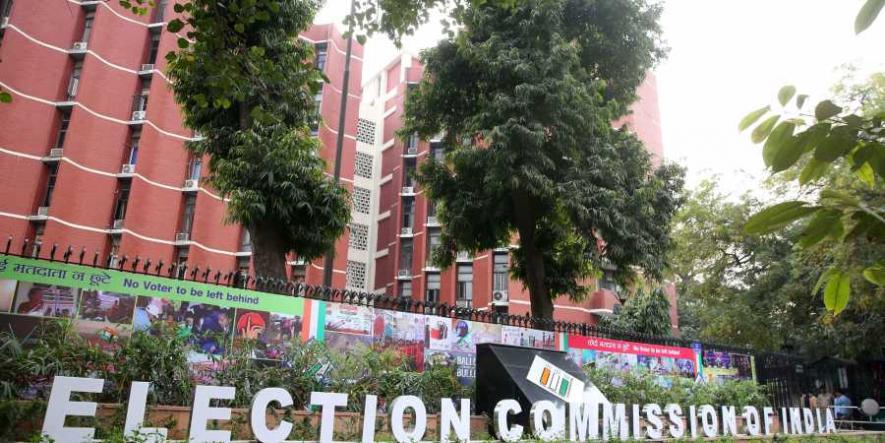
The recently concluded Lok Sabha election will go down in history for two reasons – for electing a Bharatiya Janata Party-led National Democratic Alliance (NDA) government for the second consecutive term and for massive and glaring discrepancies in the election data put out by Election Commission of India (ECI).
With a 910 million-strong electorate, and an officially confirmed voter turnout of 60.73 crore people, Indian general elections are massive in size. So is the complexity of the data involved. In the earlier elections, calculating the entire constituency-wise data, divided in to assembly constituencies and further down to the booth level, would take many months because all the data capturing was done manually. But in the era of electronic voting machines (EVMs), this should not take more than a week.
However, three weeks after the last phase of the election, ECI is yet to publish the “final data”, and whatever it has put out till now is “provisional numbers”.
The complaints of deletion of selective names from the voter lists had started to pour in from different parts of the country from earlier this year itself. Many reports suggested that the deleted names are in millions. But the ECI maintained a deafening silence over this issue.
Then came the announcement of the election schedule. The polling was held in seven phases spanning six long weeks. It was strange that a few states had a few seats going to polls in every phase. Even the smaller states like Orissa and Jharkhand voted in four phases. It was alleged that the ECI planned the election in such a way that PM Narendra Modi could utilise maximum time to campaign for his party. The ECI never even paid adequate attention to the complaints of poll code violations by Narendra Modi and then BJP President Amit Shah. And even when it did, Modi and Shah always got away with a clean chit. Interestingly, many opposition party leaders were pulled up by the ECI for the same offences.
During the elections, many videos of the political party workers forcefully casting votes while the helpless voters looked around – not knowing what is happening – have surfaced on different social media platforms from different parts of the country. ECI always religiously put out tweets saying stern action has been taken against the culprits and the officials involved. However, no political party or media seemed to have done any follow-up.
After every phase of election, videos of EVMs purportedly being transported in three-wheelers and private vehicles – without any police protection – had surfaced. At different places, EVMs were reportedly seen in hotel rooms and private residences of officials. Many purported videos, of EVMs reaching the strong rooms more than 24 hours after the polling, surfaced and were widely shared on social media. ECI always had a standard response – these were “reserved EVMs” and not the ones used for polling. However, rules say that even the reserved EVMs must reach the strong rooms along with the used machines and both should be kept in separate strong rooms. Both strong rooms must be locked and sealed at the same time. Why this rule was not followed and why the “reserved EVMs” took hours to reach the strong rooms – that too without adequate protection? ECI has not been able to explain.
The poll body’s staunch opposition to matching 50% VVPAT slips with that of the connected EVMs – both in the Supreme Court and otherwise – was another instance cited by many to say that it had taken a partisan approach in this general election.
Against this backdrop, ECI’s reluctance to publish the “final data” raises several questions. Interestingly, ECI had withdrawn whatever data was published on its website when the massive discrepancies were pointed out.
ECI publishes the election data on different websites and platforms: its main website where it had published the “provisional” data before removing it, various state election commission websites, the newly introduced mobile applications of ECI and different forms like Form 17C, Form 20 and Form 21E etc.
In every constituency, the eligible voters are numbered once they register themselves. Once that number is finalised, it is a fixed number for that particular election. The next is, the number of people who exercise their franchise. This number is counted manually in polling booths by ECI officials. Once the voting is done using the EVMs, the voter turnout is counted digitally as well. Hence, this number is also fixed once the voting is done.
The third figure – that plays an important role here – is the number of votes counted. Ideally, if the election is clean, the number of polled votes and of counted votes should match. The only add-on allowed is the number of postal ballots.
Usually, a small percentage of postal ballots get rejected due to various reasons like damaged ballot etc. So, the final count = votes on EVMs + valid postal ballots. In this case, if even after two weeks of counting, ECI says that the published data is provisional, there is something seriously wrong with the numbers counted by the poll body.
Many state election commission websites have published Form 20 on their websites. States like Uttar Pradesh haven’t published it yet. Hence, a comprehensive analysis is difficult at this stage.
Let us check three sets of such data to understand the seriousness of the issue. The first one is from ECI’s Suvidha Portal. On this portal, we can see a comparison between the 2014 and 2019 general elections data. The poll body has published the total number of eligible voters in every phase with the number of people voted. The data for the first two phases was published on April 27, i.e. 16 and 9 days after the phase 1 and phase 2 respectively. The data for the third and the fourth phase was uploaded on May 4, i.e. 11 and 5 days after the respective election days. This means that ECI had sufficient time to look into the data, do the comparison before publishing it.
ECI claimed, for the first phase, there were 14,16,90,669 eligible voters and 9,84,78,597 or 69.5% of the electorate actually voted. But when ECI published the data of all the seven phases on 22 May – a day before counting – the number of people who exercised their franchise in the first phase was changed to 9,86,50,308, which meant 1,71,711 more votes! In the second and third phases, the voter count went up marginally by 15,241 and 4,180 in the similar manner. But for the fourth phase, the data published on May 4, showed 3,259 less votes.
| Phase | No of Seats | Electorate (ECI Website) |
Electorate (Suvidha) |
Difference | Polled (Suvidha) | Polled (ECI Website) |
Variation |
|---|---|---|---|---|---|---|---|
| PH 1 | 91 | 141788110 | 141690669 | 97441 | 98478597 | 98650308 | 171711 |
| PH 2 | 95 | 155830845 | 155830758 | 87 | 108206201 | 108221442 | 15241 |
| PH 3 | 117 | 188837005 | 188838152 | -1147 | 129160097 | 129164277 | 4180 |
| PH 4 | 72 | 128200100 | 128189056 | 11044 | 83973833 | 83970574 | -3259 |
The second set of data we look at has been published by the ECI on its website a few days after every phase of election. It was finally updated on May 22 – just a day before the counting.
| Phase | Seats | Polled Votes (EVM) | Counted Votes (EVM) | Difference |
|---|---|---|---|---|
| PH 1 | 91 | 98650308 | 98680286 | 29978 |
| PH 2 | 95 | 108221442 | 109063176 | 841734 |
| PH 3 | 117 | 129164277 | 128927449 | -236828 |
| PH 4 | 72 | 83970574 | 84052745 | 82171 |
| PH 5 | 49 | 56334850 | 56234591 | -100259 |
| PH 6 | 59 | 68460969 | 68475451 | 14482 |
| PH 7 | 59 | 62558995 | 65860011 | 3301016 |
| Total | 542 | 607361415 | 611293709 | 3932294 |
If this data is compared with the results by the ECI, There is a massive difference between the total votes polled and the votes counted.
| Phase | Seats | Polled Votes (EVM) |
Postal Ballots | Counted Votes | Difference |
|---|---|---|---|---|---|
| PH 1 | 91 | 98650308 | 525048 | 99205334 | 555026 |
| PH 2 | 95 | 108221442 | 417151 | 109063176 | 841734 |
| PH 3 | 117 | 129164277 | 474278 | 129401727 | 237450 |
| PH 4 | 72 | 83970574 | 260506 | 84313251 | 342677 |
| PH 5 | 49 | 56334850 | 199636 | 56434227 | 99377 |
| PH 6 | 59 | 68460969 | 203298 | 68678749 | 217780 |
| PH 7 | 59 | 62558995 | 239514 | 66099525 | 3540530 |
| Total | 542 | 607361415 | 2319431 | 613195989 | 5834574 |
*Number of rejected postal ballots are not reduced from the counted votes.
This shows that there is a massive difference of about 5.83 million votes.
If we use the data published by Bihar state election commission, we can roughly compute the average rate of rejection of postal ballots for the rest of the country. The total number of rejected postal votes in 40 Lok Sabha constituencies of Bihar gives an average of 14.61%. Randomly picked 12 constituencies from West Bengal gave an average of 14.92%. Most of the state election commission websites did not mention the number of postal votes in Form 20. ECI website shows that in seven phases, 18,46,431 postal ballots were counted in total.
Based on these figures, if we presume that 20% of the total postal ballots were rejected, and if we subtract these from the total number of counted votes, the difference still stands at 54.65 million.
When these glaring anomalies came into public domain, ECI not only deleted the uploaded data from both Suvidha Portal and its main website, but also issued a release to say that whatever was published was “the provisional voter turnout data”, which was “tentative”. However, the ECI never bothered to answer the fundamental questions: How did it announce winners based on these “provisional” and “tentative” data? How did the automated counting of votes polled in EVMs become “tentative”?
On June 4, the poll body published a new set of data with a disclaimer, which read: “Provisional phase wise polling day voter turnout data has been replaced and data reconciled with official documents as per prescribed procedure is posted”. The file – which is not on the home page of the website – is titled “Reconciled Consolidated Voter Turnout data of Lok sabha 2019”. The uploading date is displayed as April 20. Once the file is opened, the data file still shows (Provisional)** – written in bold letters.
This file is extremely important for one particular reason. For the first time ever, ECI admits: “The difference exists as in specific cases, EVM count was not done due to technical reasons and the margin of victory was substantially higher than the difference in each such case.” What does it mean? Is the ECI saying that if the winning margin is higher than the difference, then it should not be questioned regarding the discrepancies? If so, this is hugely problematic!
It will be interesting to compare the most recent set of data with the earlier “provisional” and “tentative” data. The following chart explains the variation in detail. The data posted by ECI on May 22 had mentioned that 8,36,85,343 votes were polled using EVMs in Uttar Pradesh. But the revised data shows that 8,62,20,645 votes were polled using EVMs. What is ECI trying to say here? Three days after the last phase of election was concluded, and just a day before counting, did the poll body miss to calculate 25,35,302 votes?
| Phase | Seats | Polled Votes (EVM) |
Polled Votes (EVM) |
Counted EVM Votes |
|---|---|---|---|---|
| PH 1 | 91 | 98650308 | Unavailable | 98680286 |
| PH 2 | 95 | 108221442 | Unavailable | 109063176 |
| PH 3 | 117 | 129164277 | Unavailable | 128927449 |
| PH 4 | 72 | 83970574 | Unavailable | 84052745 |
| PH 5 | 49 | 56334850 | Unavailable | 56234591 |
| PH 6 | 59 | 68460969 | Unavailable | 68475451 |
| PH 7 | 59 | 62558995 | Unavailable | 65860011 |
| Total | 542 | 607361415 | 610826257 | 611293709 |
In case of Jharkhand, the difference in EVM votes stood at 7,24,924. There is not a single state or UT where the numbers stand the same. The lowest difference is in Chandigarh – just a single vote. Interestingly, in case of all the Northeastern states, except for Arunachal Pradesh, the recent data shows a fall in the number of votes polled on EVMs.
Let us look at some other ECI documents. In Rajasthan’s Jhunjhunu LS constituency, Form 21E shows 8,497 NOTA votes. But the segment-wise calculation in Assembly Constituencies in Form 20 shows 8,415 NOTA votes. In Ganganagar, the difference stands at 23 NOTA votes and in Ajmer it is 39. (We did not check every constituency. These are randomly picked three constituencies).
Such discrepancies create only one doubt, what is the reason behind such variations in just one day- from May 22 to May 23? Now, ECI has updated the numbers on its App and other websites to match with the new data. If ECI would have been vigilant about the accuracy of the data, it would have red-flagged the discrepancies on the counting day itself.
Get the latest reports & analysis with people's perspective on Protests, movements & deep analytical videos, discussions of the current affairs in your Telegram app. Subscribe to NewsClick's Telegram channel & get Real-Time updates on stories, as they get published on our website.










